PopCulture25YL looks back at the music, shows, comics, books and whatever else we want from the month that was November of 1994 to explore why they’re still relevant to us 25 years later. This week brings us The X-Files’ 3, Friends‘ The One With The Blackout, Killer Instinct, Aerosmith’s Big Ones, and Nirvana’s MTV Unplugged In New York.
VHS In The VCR
Vampires come to the X-Files: S2E7- “3” by John Bernardy
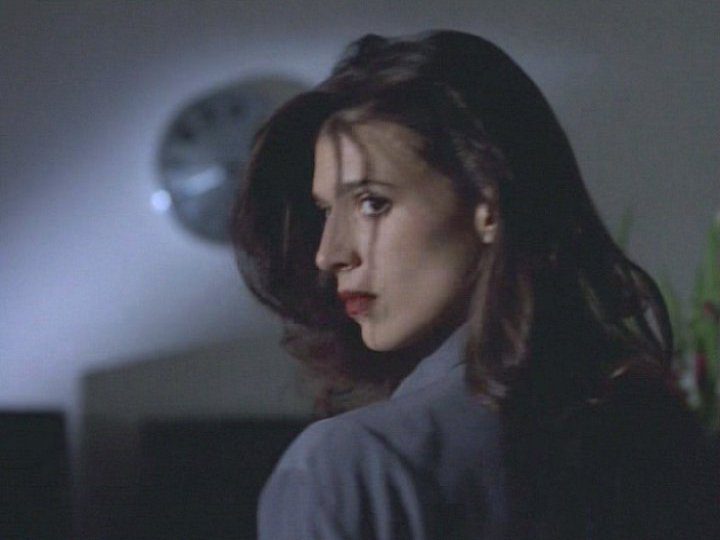
The song that begins the episode is “Carmen Amatorium Ex Arcanum”, which is one of my all time favorites from The Truth and the Light: Music From the X-Files by Mark Snow. That song is pure gold but I could not place it within the series to save my life. I found out today that it is because it’s one of my least favorite episodes from Season 2, “3”
The episode begins with the woman we’ll learn is named Kristen (Perrey Reeves), who appears to be an honest-to-god vampire, working on a mark.
We’ll discover later after Mulder investigates her and the case that she’s on her way to becoming a vampire but she’s not there yet. She is, however, tangled up with a vampire named John (played well by Frank Military). Mulder apprehends John when he finds him feeding on a blood bag in a dark part of the hospital where he was posing as a night watchman.
After a bunch of cat and mouse, we find out John “loves” Kristen and wants to finish turning her into a proper vampire, but she just wants to be free of him and the other two dangerous vampire of his trio. And she’d rather blow up her house while still in it than be their kind of vampire.
Despite not feeling like a good fit for the X-Files, there are solid moments all the way through “3”. Mulder’s interrogation of John, then calling himself only “the son”, was compelling as all get out under the red lighting. And when you weren’t sure if Kristen was going to try to kill Mulder or not was really tense in a good way. I already mentioned that haunting song.
The whole episode begins with a scene of planes putting out a wildfire in California. just outside Kristen’s neighborhood. It’s nice color for an episode where the heat is on but it could burn you down in an instant. In a world where Interview With The Vampire was the spiciest hot book of the day, the metaphor was fairly understood in regards to vampires. The X-Files crew did a good job grounding that feeling in reality by tying it to wildfires, as well as the vampire craze of the day. But besides the craze, why did the show feel the need to do this in the first place?
The other framework the episode went back to again and again was Mulder holding Scully’s possessions, even though this was the only episode Gillian Anderson did not appear in. Her loss was palpable after Scully was abducted in the previous episode, which to the best of my knowledge was the only reason Mulder became entangled in this mess in the first place.
Mulder just lost Scully, he’s not going to lose anyone else, especially someone he’s attracted enough to to have a mid-episode fling with. By that point, his white knight syndrome was already in full swing, and he’d figured out Kristen was not the perpetrator but the hunted. He would save her from the trio of vampires who kept involving themselves in her business. Mulder couldn’t save Scully but he can solve the problem right in front of him.
Maybe at the time the episode was sexy, but it just seemed misguided. Mulder was stuck in PTSD over Scully, acting impulsively throughout. He was playing with fire. Possibly the most realistic part of this episode is that Mulder didn’t save the day. Kristen gets herself out of her situation, however extreme it may be to pour gas over her own house and light a match. For what ended up being the truest way for the story to end, it didn’t feel overly satisfying because Mulder was on the periphery the whole time.
It’s a solid episode, looking back, just not a favorite of mine, especially considering the highs from last time, and the heights we’ll go to next.
Friends- “The One With the Blackout” by Abbie Sears
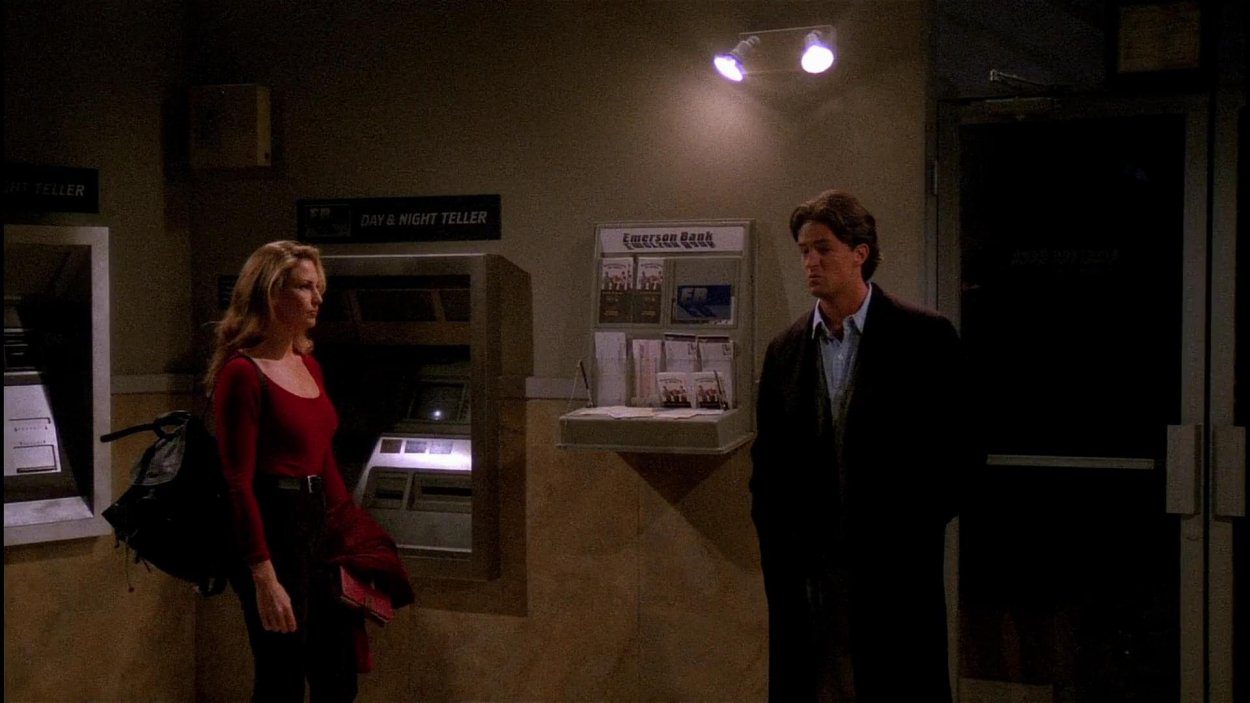
So! It’s November and Friends is back with an absolute classic. Episode 7 – The One with the Blackout. It’s instantly recognisable as the one where Ross gets his heart splattered across Monica’s living room floor. And of course, it all begins with a blackout. Phoebe is set up at Central Perk ready to play a song about the moment you realise what life is all about, but with the first strum of the guitar, the entire city goes dark. It’s a shame, I would love to hear what life is really about from Phoebe’s perspective!
The gang (minus Chandler) sit around the coffee table in Monica’s apartment discussing the weirdest place they’ve has sex. Monica admits hers was on a pool table back in college, Joey’s was in the women’s bathroom in the New York City library, Ross surprises us all with the Small World ride at Disneyland, and Rachel swoops in and takes the crown with the very thrilling “the foot of the bed!”
I can’t help but find Phoebe’s answer the most hilarious: Milwaukee.
This episode brings along with it some epic romance failures. first of all, where was Chandler during this? He was stuck! In an ATM vestibule! With Jill Goodacre!
Amazing. He tries his best to keep it cool, which leads to him saying no to gum, then deciding gum would be “perfection”, then later spitting out the gum whilst trying to blow a bubble, and choking when he realises he had picked up someone else’s gum and put it in his mouth. These are classic Chandler romance moves here. It kind of works too, after she stops him choking, they have a very pleasant blackout. I still totally think he could have got her number instead of hugging the door when she left, but he is a man of many missed opportunities.
Anyway, during this blackout, Ross decides to finally tell Rachel how he feels because Joey tells him he’s in the friend-zone. Of course, this decision had consequences because as he started to say it, he was viciously attacked by a cat. You may ask yourself…is this a sign from the universe? Maybe it was a sign for Ross to give up hope, or maybe it was a sign that lead Rachel directly into the arms of the handsome Italian, Paolo. Ah yes, Paolo, the weenie from Torini. Naturally, with one glance into those eyes Rachel is smitten, and she brings him back to the apartment. This episode is a nightmare for our Ross, and as the episode ends, and the lights come back on, Ross sees them passionately kissing across the table from him. Earlier in the episode, Rachel complains that she never had any passion, and when Ross tells her she will find it, I certainly don’t think this is what he had in mind.
Mashing Buttons
Killer Instinct by Dave Doherty
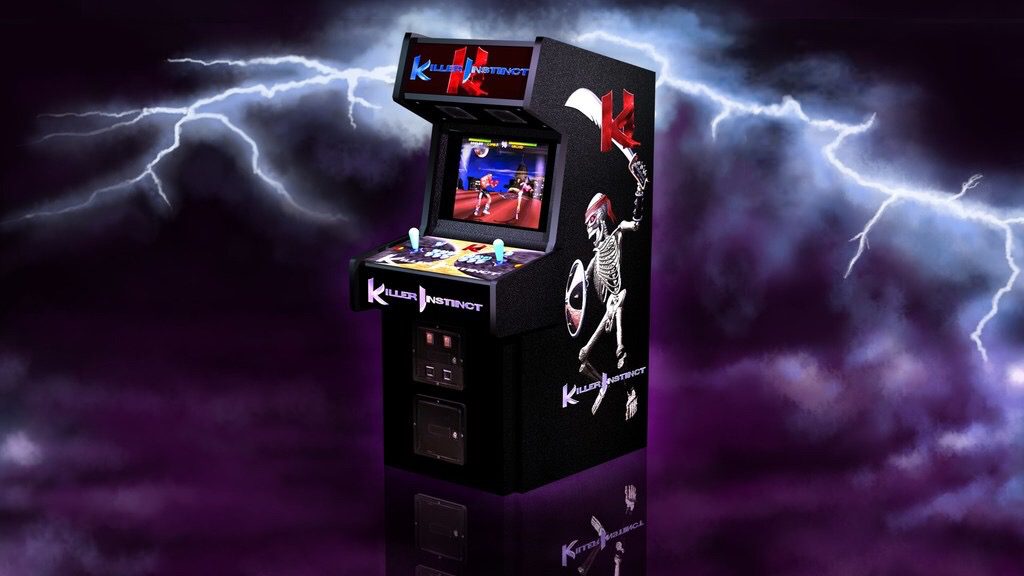
Killer Instinct was developed by RARE for the arcades back in November 1994. A 1-on-1 fighting game in a similar style to the legendary Street Fighter II and Mortal Kombat with some insane combo moves which the game absolutely encouraged you to try and use.
There was a huge amount of hype surrounding Killer Instinct from its arcade release due to it displaying a logo: “Nintendo Ultra 64” during its introduction. This was the original name Nintendo had used for its up and coming 64-bit home console, which was eventually named “Nintendo 64” as we all know. Originally, Killer Instinct was set to be a title released for Nintendo’s 64-bit console but it never came due to various delays in getting the console out. So Killer Instinct instead was backported to the 16-bit Super Nintendo and the 8-bit Legendary Gameboy. The result was an impressive looking game on both machines but in my personal opinion and experience, it was frustrating.
The problem was that we already had the brilliant Street Fighter II and all fighting games that came after it were measured up against it and this is where my frustration comes into play. For a start I find Killer Instinct to be less responsive than Street Fighter II, though with time and getting used to it, a real solid fighting game lays within the impressive-looking graphics.
The 11 character designs are also very distinguished from one another, offering great variety. You have an interesting array of characters to choose from and pit your skills against, these range from Jargo who is a warrior monk to Sabrewulf who is a wolf-like creature. Along with unique play-styles and special moves, each fighter in Killer Instinct has a variety of ways to set up and finish combos. Every character also has their own ultra-stylish Ultra Combo (AKA finishing move), which can be unleashed when their opponent’s health is low. No doubt, these Ultra Combos never failed to wow the audience at the arcades. Although there is no “dash,” all characters have a solid variety of special moves and abilities to get in for that initial attack.
It is possible to pull off some insane combo moves, some of which seem unfair to use as your opponent can do very little to defend against them. The Ultimate Combo allows your character to deliver a long string of hits as the combo finisher. I have watched some insane 20+ hit combos being done by both the CPU and a player and it’s quite a sight to see! These combo moves can sometimes reach upwards of 80+ hits do take some pulling off mind you and mastering them is the key to victory in Killer Instinct.
Killer Instinct also introduced Combo Breakers to the fighting genre. Combo Breakers are pretty damn satisfying to perform (and look awesome). However, Combo Breakers probably caused 75% of all Killer Instinct cabinets to have to be repaired, since mashing random buttons and the directional pad actually worked quite well when trying to perform a breaker. Killer Instinct also introduced the “double health meter”. Instead of winning two rounds, each fighter starts the fight with two bars of energy. A brief pause occurs when a fighter loses their first bar, then the fight resumes. This unfamiliar “pace” of gameplay was yet another attribute made KI stand out. Additionally, after an initial K.O., a defeated player also has the chance to “revive” themselves if the victor doesn’t land a finishing attack of some kind. In some cases, this gives the victor an interesting option to let their opponent “stand up” and fight after a K.O…if perhaps they have enough health left to confidently defeat their opponent yet again.
For an arcade game, KI was nothing short of a masterpiece. Each arcade cabinet also features a “highest combo record” for each character…and back in the day, any local player who could get their initials on there got major respect at the arcade. *sigh* I miss the ‘90s, such simpler times.
CDs On Rotation In Our Six-Disc
Aerosmith- Big Ones by Will Johnson
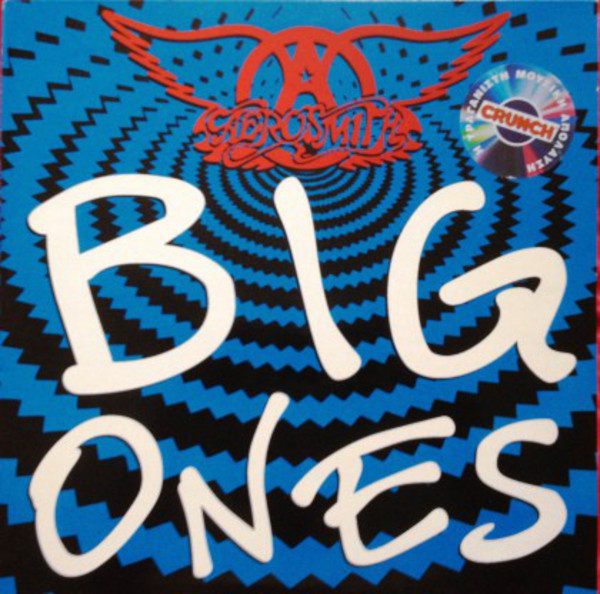
There comes a time in every young man or woman’s life when they must buy their first CD. Okay, well, maybe there was a very specific time when someone would buy a CD specifically (in other words, old farts like me), but, in general, a young person makes the purposeful choice of buying their first album or collection of music that may begin the formation of what becomes taste.
When I look back at how I eventually got into heavy metal, and thrash metal specifically, I had to see how that specific mixture of music coalesced. And, naturally, I traced the first albums I bought and consumed. The essence of thrash metal is a mixture of speed, classic rock and blues (yes, blues). While legends like Black Sabbath certainly made things darker lyrically, they also infused blues sensibilities into a literally dark sound (mostly the use of down-tuning, distortion, and tri-tones). When you look at the historical influences of a legendary band like Metallica, you’ll notice a collection of non-metal rock bands and punk rockers.
Unknown to me, those first seminal purchases of CDs —and also, ready for this kids, cassettes!— led to the formation of my later day taste. But a lot of it was based on simple fate, luck, and peer pressure. I started buying albums in the early ‘90s. Some albums were because everyone else was buying them and we consumed them as some sort of community hive mind. Green Day’s Dookie and the Offspring’s Smash were two of my first albums. I got into faster, punk-infused music because of purchases like that.
But I also looked at my very first purchase and that was Aerosmith’s Big Ones. The ironic thing about Big Ones being a first purchase is that I generally hate greatest hits albums. But, alas, my first CD purchase was a greatest hits album. Aerosmith, who was going through a cultural renaissance in the ‘90s after immense success in the ’70s and varied, mixed results in the early to mid ‘80s, released Big Ones to collect their immense collection of hits between 1987 and 1993.
While I was getting speed from punk bands, I was getting a rock/blues combo from the impressive collection of tracks on Big Ones thanks to Aerosmith. Taking tracks from Permanent Vacation (1987), Pump (1989), and Get a Grip (1993), as well as providing a few previously unreleased tracks made specifically for the compilation, I was exposed to the essence of rock. These four albums were not heavy metal, by any means, but did feature the skeletal structure of what metal would take and make heavier and faster.
In fact, the unreleased opening track “Walk on Water” might fool you into thinking it’s a metal banger, opening with oppressively concussive drums and a classic metal-lite crunch before going into the more typical Aerosmith flare of harmonica and peppy guitar riffs. The biggest effect Big Ones had one me however was introducing me to the concept of the guitar solo. Track 2 of Big Ones was “Love In An Elevator” from the album Pump. That song not only features some addicting melodies and a solid hard rock sound but has two solos, the first from rhythm guitarist Brad Whitford and the second by Joe Perry. To hear guitars “speak” like that kind of blew my mind at such a young age.
“Eat the Rich”, a rebellious song for a preteen —it even has cussing and everything— originally from Get a Grip contains a pretty gnarly guitar solo that could be heard on New Wave from British Heavy Metal bands and thrash acts albums as well. Add in the effect of the music video, “Cryin’” and “Crazy” were all over MTV with heartthrobs Alicia Silverstone and Liv Tyler, and Big Ones opened me up to experiment with new types of music.
It is ironic, in a way, since by the time Big Ones was released, thrash metal was dead and grunge was in its prime, but Aerosmith made me look back for that mixture of blues, hard rock, and, thanks to the punk bands, speed and I discovered thrash from the trash heap of musical history. Aerosmith led me to Metallica and, well, the rest is history. As far as first albums go, Big Ones is pretty legendary for a young man trying to form taste. It will always have a special place in my heart.
Nirvana- MTV Unplugged In New York by Caemeron Crain
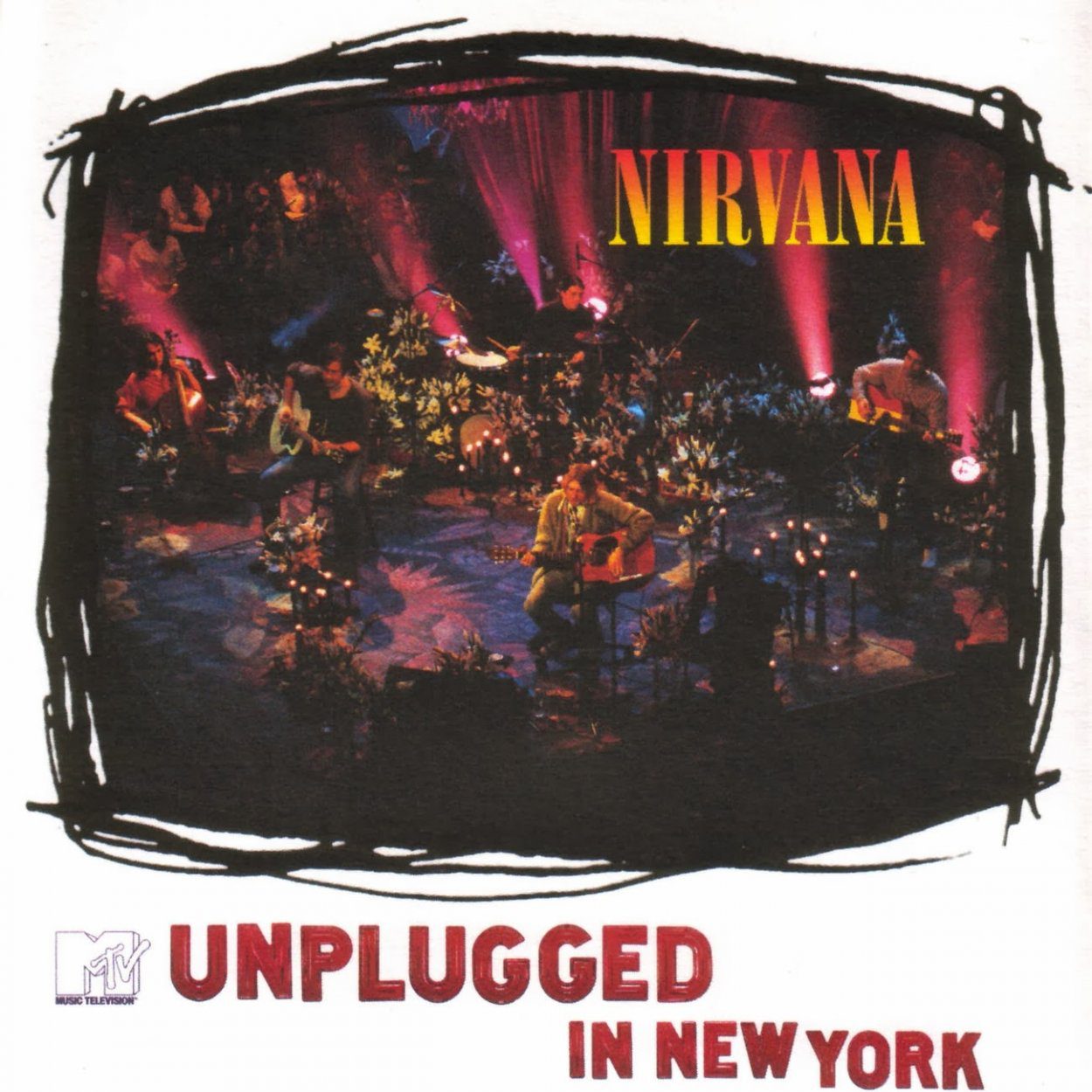
When Nirvana Unplugged was released in November of 1994, Kurt Cobain had already been dead for months. It’s true that the recording was made in the previous year, and the performance aired as a part of MTV’s Unplugged series, but this was long before the kind of access to things we enjoy now, through the YouTube and such. Unless you’d caught it when it aired, you probably hadn’t heard this stuff, and unless you’d also taped it or saw reruns, you hadn’t heard it more than once.
It’s hard to explain the impact Nirvana had on my life to someone who wasn’t there at the time. If you were, you’ll know what I’m talking about. I was rather young, all things considered, but when Nirvana hit in the early ‘90s it felt world-breaking in the best possible way. The late ‘80s had been full of glam metal and insipid pop, at least in terms of what was widely accessible. And if something wasn’t making the rounds on MTV and the radio, well, maybe you could seek it out, but there was a good chance you wouldn’t even know about it.
When Nirvana broke through that system and became immensely popular, it felt like a sea change. Perhaps this was naïve, but my teenage self thought that something fundamentally important had happened—something about authenticity in response to the fakeness of all of this saccharine garbage I’d grown up with. And I listened to Nirvana constantly.
I actually don’t recall exactly how I learned of Cobain’s death—it might have been from this girl I had a crush on—but at a certain point it was just known. And if you weren’t one of us who was there to feel that at the time, I don’t know if I can describe it.
But so, Nirvana Unplugged landed posthumously in terms of Cobain, and one couldn’t help but hear it that way. The album almost seems like a suicide note, but in the most beautiful way. Virtually every song has at least one lyric that reminds you of Kurt Cobain’s death.
The covers are immensely powerful, from “Jesus Don’t Want Me For a Sunbeam” to “Where Did You Sleep Last Night?” and everything in between. But it’s the fact that they did as many covers as they did that strikes me as more significant.
MTV Unplugged never really interested me all that much. It was just about bands playing their songs acoustically instead of on the electronic instruments that they tended to use. That’s a cool enough premise, but I can’t think of another instance that was as powerful as what happened with Nirvana.
I think this is their best album. If I could only have one, it would be this. Nirvana took the form and played with it masterfully. The covers are all arguably better than the originals, as are the versions of their own songs, and the “unplugged” aspect never feels like a gimmick, but instead highlights the unique and innovative chord structures that pervade their music. This is what always set them apart from the many others who came in their wake as “Alternative” music became mainstream: the chord progressions are stunning.
Acoustic, it feels all the more real. It feels all the more authentic. And when Kurt sings “All Apologies” and you hear that mere months after his suicide…
What else should I write?
I don’t have the right
What else should I be?
All apologies


